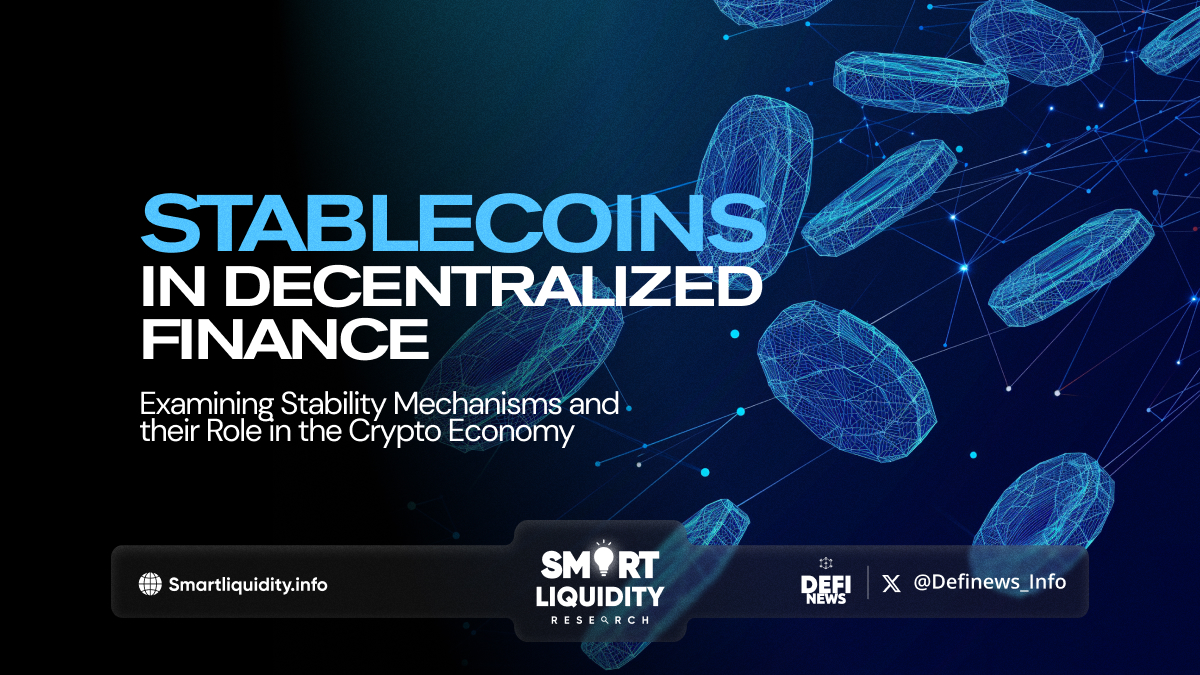Stablecoins in Decentralized Finance


Stablecoins in Decentralized Finance (DeFi), examining stability mechanisms and their role in the crypto economy.
Stablecoins have emerged as a vital component of the rapidly expanding realm of decentralized finance (DeFi), providing much-needed stability in an otherwise volatile crypto market. These digital assets are designed to maintain a steady value, often pegged to fiat currencies like the US dollar or collateralized by other assets such as cryptocurrencies or commodities.
In this article, we delve into the various stability mechanisms employed by stablecoins and explore their significance in the evolving landscape of DeFi.
1. Fiat-Collateralized Stablecoins
Stablecoins like Tether (USDT), USD Coin (USDC), and TrueUSD (TUSD) are backed by reserves of fiat currency to ensure stability.
2. Crypto-Collateralized Stablecoins
These stablecoins are backed by cryptocurrencies held as collateral. Smart contracts maintain the stability of the coin by automatically adjusting the collateralization ratio. MakerDAO’s DAI is a prominent example of a crypto-collateralized stablecoin, backed by Ethereum.
3. Algorithmic Stablecoins
Unlike the previous types, algorithmic stablecoins don’t rely on collateral. Instead, they use algorithms to manage the coin’s supply dynamically, aiming to stabilize its value. However, these models can be complex and subject to manipulation. Basis (formerly known as Basecoin) attempted this approach but ultimately failed due to regulatory concerns.
The role of stablecoins in DeFi cannot be overstated. They serve as a bridge between the traditional financial world and the emerging decentralized ecosystem, enabling users to hedge against crypto volatility without exiting the crypto space. Moreover, stablecoins facilitate seamless transactions within DeFi protocols, such as lending, borrowing, and decentralized exchanges (DEXs), by providing a stable unit of account.
Despite their importance, stablecoins face challenges, including regulatory scrutiny, counterparty risks (in the case of fiat-backed stablecoins), and potential algorithmic vulnerabilities. Regulatory concerns, particularly regarding fiat-backed stablecoins, have led to calls for increased transparency and regulatory oversight to ensure that stablecoin issuers maintain adequate reserves.
In conclusion, stablecoins play a crucial role in the maturation of DeFi, offering stability and liquidity in a volatile crypto market. However, their design and governance mechanisms are subjects of ongoing debate and refinement as the industry seeks to strike a balance between innovation and stability. As the crypto economy continues to evolve, stablecoins are likely to remain at the forefront of this transformation, facilitating broader adoption and integration of blockchain technology into mainstream finance.




